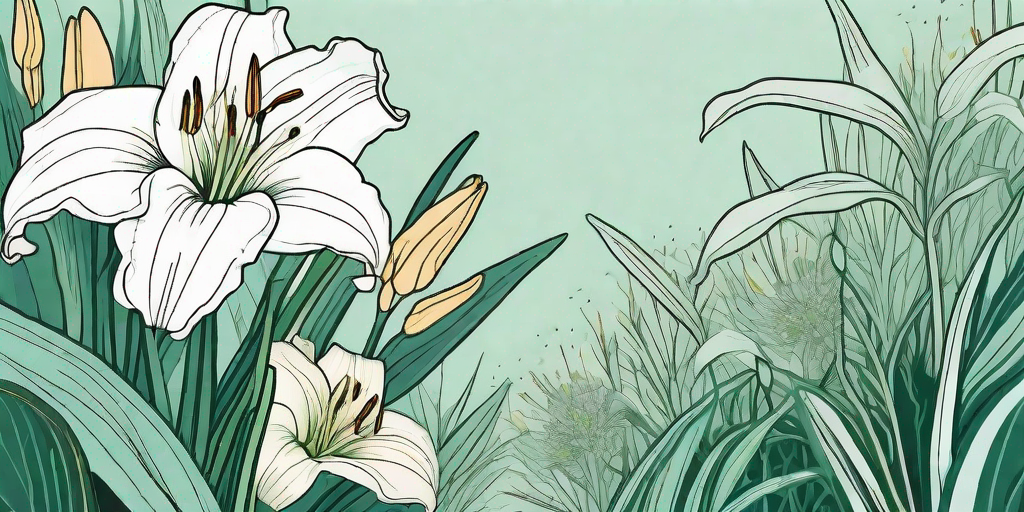
Daylilies, those vibrant, hardy perennials that grace our gardens with their stunning blooms, have a secret. They love to multiply, and if left unchecked, they can transform your well-manicured garden into a daylily jungle. But fear not, dear gardener, for there is a solution to this botanical conundrum. It's called dividing daylilies, and it's an art form that, once mastered, will ensure your garden remains a harmonious haven of horticultural delight.
The Why and When of Dividing Daylilies
Why Divide Daylilies?
Before we dive into the how, let's first address the why. Why should you divide your daylilies? Well, aside from preventing an all-out daylily takeover, dividing these plants has several benefits. Firstly, it promotes healthier growth. Overcrowded plants compete for resources, leading to smaller, less vibrant blooms. By giving your daylilies more space, you'll encourage bigger, brighter flowers. Secondly, it's a great way to propagate your plants. Dividing daylilies allows you to spread the joy of these beautiful flowers to other parts of your garden, or even to your friends' gardens!
Lastly, it's a fantastic opportunity to get up close and personal with your plants. Gardening isn't just about creating beautiful spaces; it's also about connecting with nature and understanding the life cycles of the plants you care for. Dividing daylilies gives you a chance to play an active role in their growth and development.
When to Divide Daylilies?
Now that we've established the why, let's move on to the when. Timing is everything in gardening, and dividing daylilies is no exception. The best time to divide these plants is in early spring or late summer. In early spring, the plants are just starting to come out of their winter dormancy, making it an ideal time to give them a fresh start. Late summer, on the other hand, is a good time because the plants have finished blooming and can focus all their energy on establishing new roots.
However, daylilies are incredibly resilient, and if you miss these windows, don't fret. You can divide daylilies at any time of the year, as long as you provide them with plenty of water and care after the division.
The How of Dividing Daylilies
Step 1: Preparation
Like any good artist, you need to prepare your canvas before you start. In this case, your canvas is the garden, and your preparation involves watering your daylilies thoroughly a day before the division. This will make the soil easier to work with and reduce stress on the plants.
Next, gather your tools. You'll need a spade or garden fork, a sharp knife or pruning shears, and a bucket or wheelbarrow to hold the divided plants. Don your gardening gloves, and you're ready to begin.
Step 2: Digging Up the Daylilies
Start by digging a wide circle around the base of the daylily clump, taking care not to damage the roots. Once you've loosened the soil, slide your spade or fork under the clump and lift it out of the ground. Give it a gentle shake to remove excess soil, and voila, you've successfully excavated your daylilies.
Take a moment to admire your handiwork, and then get ready for the next step.
Step 3: Division
This is where the real artistry comes in. Using your hands, a knife, or pruning shears, gently separate the clump into smaller sections. Each section should have at least two or three shoots and a healthy root system. Be careful not to damage the roots during this process.
Once you've divided the clump, place the sections in your bucket or wheelbarrow and give yourself a pat on the back. You're doing great!
Step 4: Replanting
Now it's time to give your divided daylilies a new home. Dig a hole that's wide and deep enough to accommodate the roots of the plant. Place the plant in the hole, making sure the crown (the part where the stem and roots meet) is level with the soil surface. Backfill the hole with soil, firm it gently, and water the plant thoroughly.
Repeat this process for all your divided daylilies, and before you know it, you'll have transformed your overcrowded garden into a daylily paradise.
FAQs About Dividing Daylilies
- How often should I divide my daylilies?
As a general rule, daylilies should be divided every three to five years. However, this can vary depending on the growth rate of your plants. If your daylilies are growing rapidly and becoming overcrowded, you may need to divide them more frequently.
- Can I divide daylilies in the fall?
Yes, you can divide daylilies in the fall, but it's not the ideal time. If you divide your plants in the fall, make sure to do it early enough that the plants have time to establish their roots before the first frost.
- What should I do with the divided daylilies?
You can replant them in other parts of your garden, give them to friends or neighbors, or even sell them. The world is your oyster!
Conclusion
Dividing daylilies may seem like a daunting task, but with a bit of knowledge and a dash of humor, it can be a fun and rewarding experience. So roll up your sleeves, grab your gardening tools, and get ready to say goodbye to overcrowded gardens and hello to a thriving daylily paradise.
Happy gardening!















